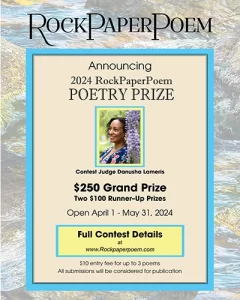Approaching Ice
In her profession as a naturalist, Elizabeth Bradfield (Interpretive Work) uses a writer’s attention to detail and research. Approaching Ice, her second collection of poetry, captures the frozen climate of the poles, exploring not only the external packed snow of the Arctic and Antarctic but also the internal “climate of the heart.” Her poems resonate with a need to discover what lies beneath the ice, such as when she echoes John Cleve Symmes’s longing to find “another earth / within our earth, more perfect, richer,” to claim our planet’s last unexplored frontier.
In her profession as a naturalist, Elizabeth Bradfield (Interpretive Work) uses a writer’s attention to detail and research. Approaching Ice, her second collection of poetry, captures the frozen climate of the poles, exploring not only the external packed snow of the Arctic and Antarctic but also the internal “climate of the heart.” Her poems resonate with a need to discover what lies beneath the ice, such as when she echoes John Cleve Symmes’s longing to find “another earth / within our earth, more perfect, richer,” to claim our planet’s last unexplored frontier.
Employing narrative, lyric, and prose poems, Bradfield matches each poem to an essential task. Some narrate the lives and adventures of 19th and 20th century polar explorers, whose lust for discovery led them into “blue contours of freeze.” A series of seven prose poems, titled “Notes on Ice in Bowditch,” chronicles Bradfield’s investigation to redefine polar vocabulary, creating a native lexicon inherent to the book. While the similar diction sometimes grows repetitive, Bradfield invigorates images of white and gray snow with the colorful characters traversing its lengths. For example, after color film comes to the polar regions, she describes a “grease ice melon with algae” and “petals of ice flowers.”
Bradfield recasts widely held notions of human and natural history by questioning tenuous claims of human ownership upon the land. In a portrait of “Polar Explorer Carsten Borchgrevink,” she writes: “But what slim hold / history has even here.” She questions our limited human knowledge with the “space-age trilling” James Weddell hears from the animals occupying the shifting ice. She constructs a disorienting world for the explorers, who must travel through the wind’s “directionless swirl / and the compass’ doubtful arrow.” Readers follow blindly into the whiteout, ending any previously held notions of grand adventure. With a few pages, readers understand that these explorers tread the perilous ice, at the brink of death with every step.
Despite its bleak themes, Approaching Ice radiates warmth toward its readers. The accessibility of these icy poems comes from Bradfield’s personal connection to her subjects. She investigates the complicated notions of exploration by inserting herself into the book as an armchair explorer and a sympathetic partner to lonely wives. Thus, in “Wives of the Polar Explorers,” Bradfield knows how separation affects those who leave and those who stay. She knows that “trying to understand // through the strange dialects discovered in separation / of solitude, of companionship” becomes frustrating and lonely, as her partner leaves on another long journey.
Powerful images of “Glaciers capping the hills / like false teeth” map connections across the narrative arc of polar exploration. Such imagistic poems remind readers of the “strange, cold dream” Bradfield constructs with precise craft and conviction. Novice or long-time readers of poetry will appreciate Bradfield’s depiction of the ever-shifting yet permanent ice caps and the visitors to and habitants of the Arctic. All serve as poignant reminders of the ice caps that melt today.





